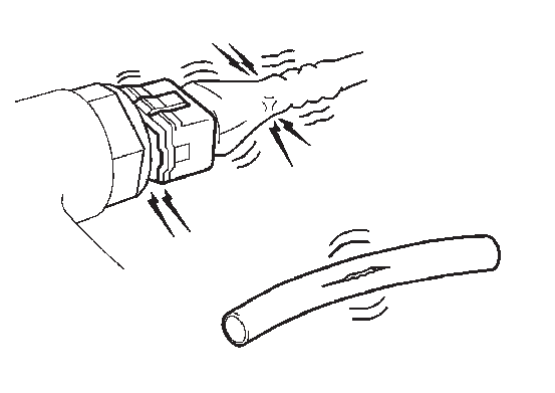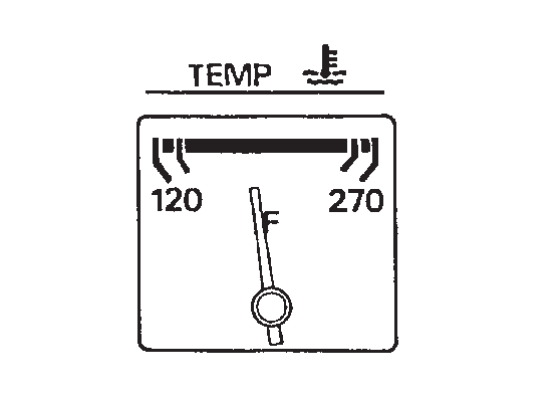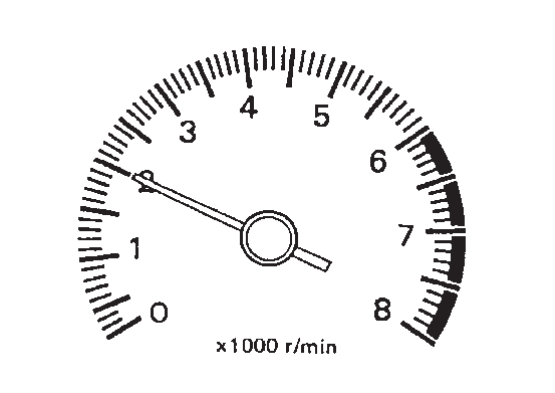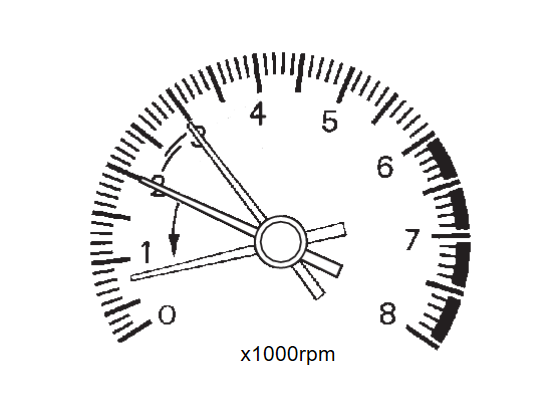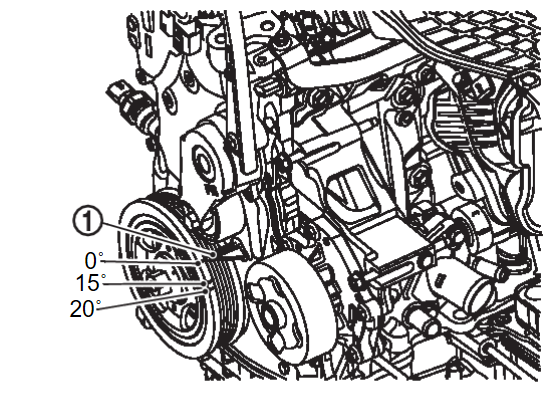Work Procedure
1.INSPECTION START
- Check service records for any recent repairs that may indicate a related malfunction, or a current need for scheduled maintenance.
- Open engine hood and check the following:
- Harness connectors for improper connections
- Wiring harness for improper connections, pinches and cut
- Vacuum hoses for splits, kinks and improper connections
- Hoses and ducts for leaks
- Air cleaner clogging
- Gasket
- Confirm that electrical or mechanical loads are not applied.
- Headlight switch is OFF.
- Air conditioner switch is OFF.
- Rear window defogger switch is OFF.
- Steering wheel is in the straight-ahead position, etc.
- Start engine and warm it up until engine coolant temperature indicator points the middle of gauge.Ensure engine stays below 1,000 rpm.
- Run engine at about 2,000 rpm for about 2 minutes under no load.
- Make sure that no DTC is displayed with M.U.T.-III SE or GST.
Is any DTC detected?
2.REPAIR OR REPLACE
3.CHECK TARGET IDLE SPEED
- Run engine at about 2,000 rpm for about 2 minutes under no load.
- Rev engine (2,000 to 3,000 rpm) two or three times under no load, then run engine at idle speed for about 1 minute.
- Check idle speed.For procedure, Refer to IDLE SPEED : Periodic Maintenance
 .For specification, Refer to IGNITION TIMING : Service Data
.For specification, Refer to IGNITION TIMING : Service Data .
.
Is the inspection result normal?
6.PERFORM IDLE AIR VOLUME LEARNING
Refer to Description .
.
 .
.Is Idle Air Volume Learning carried out successfully?
7.CHECK TARGET IDLE SPEED AGAIN
- Start engine and warm it up to normal operating temperature.
- Check idle speed.For procedure, Refer to IDLE SPEED : Periodic Maintenance
 .For specification, Refer to IGNITION TIMING : Service Data
.For specification, Refer to IGNITION TIMING : Service Data .
.
Is the inspection result normal?
8.DETECT MALFUNCTIONING PART
Check the Following.
- Check camshaft position sensor and circuit. Refer to DTC Description
 .
. - Check crankshaft position sensor and circuit. Refer to DTC Description
 .
.
Is the inspection result normal?
9.CHECK ECM FUNCTION
- Substitute another known-good ECM to check ECM function. (ECM may be the cause of an incident, but this is a rare case.)
- Perform initialization of NVIS (NATS) system and registration of all NVIS (NATS) ignition key IDs. Refer to Work Procedure
 .
.
10.CHECK IGNITION TIMING
- Run engine at idle.
- Check ignition timing with a timing light.

Timing indicator For procedure,Refer to IGNITION TIMING : Periodic Maintenance . For specification, Refer to IGNITION TIMING : Service Data
. For specification, Refer to IGNITION TIMING : Service Data .
.
Is the inspection result normal?
 INSPECTION END.
INSPECTION END.13.PERFORM IDLE AIR VOLUME LEARNING
Refer to Description .
.
 .
.Is Idle Air Volume Learning carried out successfully?
14.CHECK TARGET IDLE SPEED AGAIN
- Start engine and warm it up to normal operating temperature.
- Check idle speed.For procedure, Refer to IDLE SPEED : Periodic Maintenance
 .For specification, Refer to IGNITION TIMING : Service Data
.For specification, Refer to IGNITION TIMING : Service Data .
.
Is the inspection result normal?
15.CHECK IGNITION TIMING AGAIN
- Run engine at idle.
- Check ignition timing with a timing light.

Timing indicator For procedure, Refer to IGNITION TIMING : Periodic Maintenance . For specification, Refer to IGNITION TIMING : Service Data
. For specification, Refer to IGNITION TIMING : Service Data .
.
Is the inspection result normal?
 INSPECTION END.
INSPECTION END.16.CHECK TIMING CHAIN INSTALLATION
Check timing chain installation. Refer to Removal and Installation .
.
 .
.Is the inspection result normal?
17.DETECT MALFUNCTIONING PART
Check the following.
- Check camshaft position sensor and circuit. Refer to DTC Description
 .
. - Check crankshaft position sensor and circuit. Refer to DTC Description
 .
.
Is the inspection result normal?
18.CHECK ECM FUNCTION
- Substitute another known-good ECM to check ECM function. (ECM may be the cause of an incident, but this is a rare case.)
- Perform initialization of NVIS (NATS) system and registration of all NVIS (NATS) ignition key IDs. Refer to Work Procedure
 .
.
![[Previous]](../../../buttons/fprev.png)
![[Next]](../../../buttons/fnext.png)
